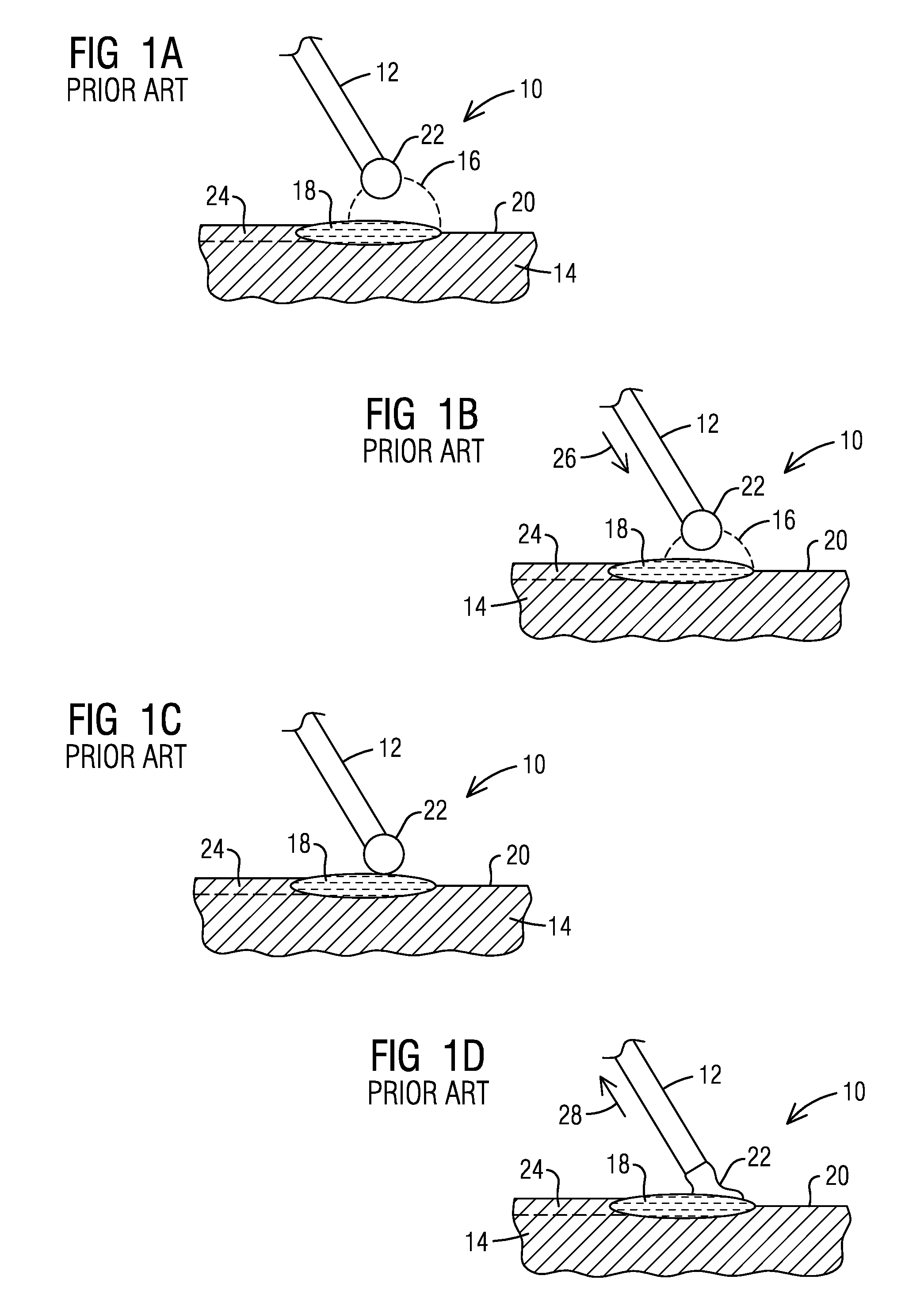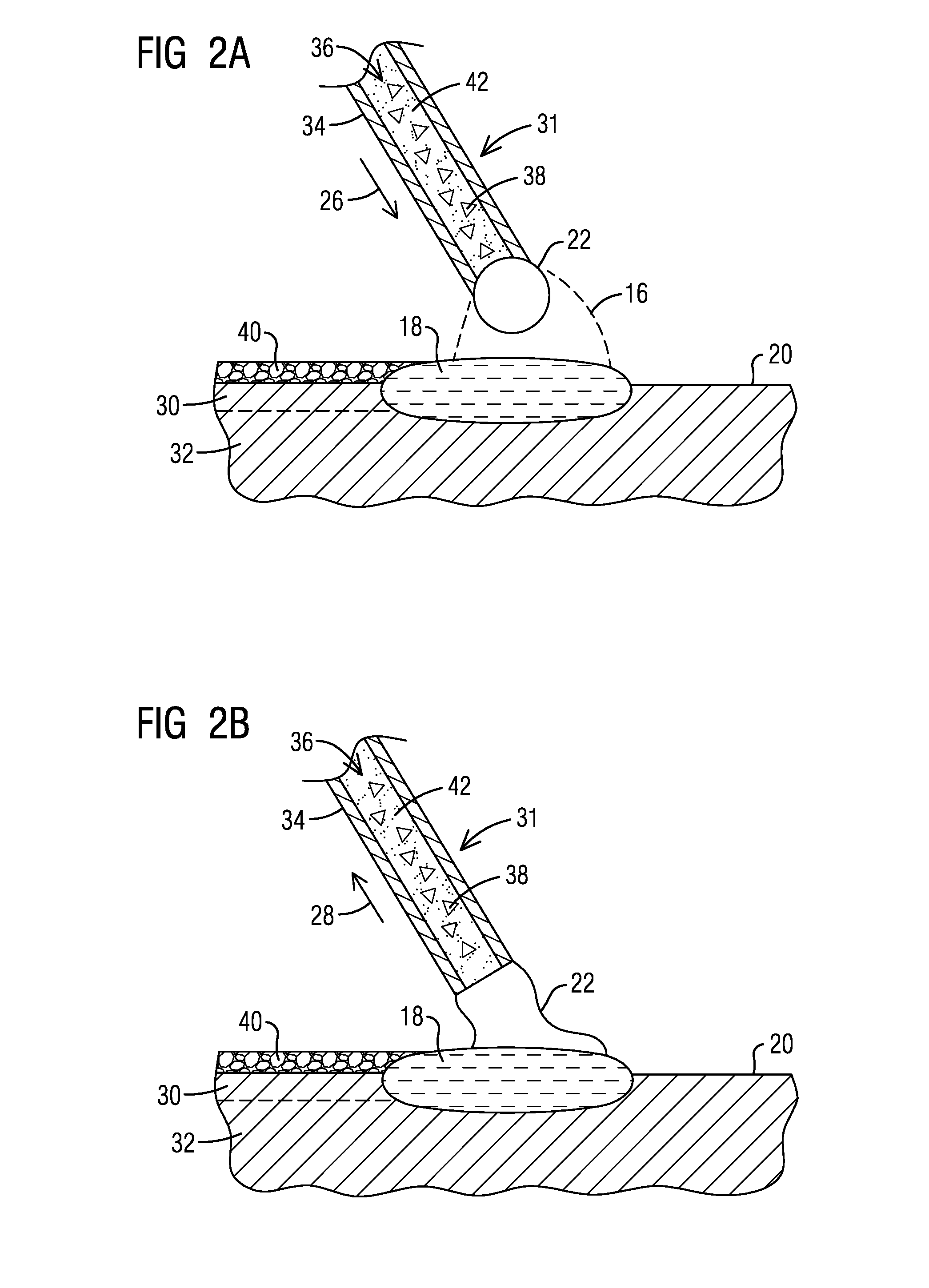Low heat flux mediated cladding of superalloys using cored feed material
a superalloy and cored technology, applied in the field of metal joining, can solve the problems of limited hot box welding, difficult repair of superalloy materials, and difficult welding of superalloy materials,
- Summary
- Abstract
- Description
- Claims
- Application Information
AI Technical Summary
Benefits of technology
Problems solved by technology
Method used
Image
Examples
Embodiment Construction
[0019]The inventor has recognized that a practical limitation in application of CMT with superalloys is that superalloy wire is very difficult to manufacture and is very expensive. Superalloys are inherently strong and therefore difficult to draw into wire form. They are also prone to cold working (strengthening by dislocation generation) during the drawing process. Furthermore, some superalloys readily form high temperature oxides during initial rod casting which, if left in wire subsequently processed from such material, results in inferior weld properties. U.S. Pat. No. 8,466,389 to Smashey teaches use of directional solidification in investment or continuous casting of rods to float oxide inclusions (e.g. hafnium, aluminum, and perhaps titanium oxides) to the surface where they can be removed. Such rods can be extruded into clean superalloy wire, but the overall process to create spools of reasonable lengths of weld wire for CMT would have been disadvantageous and practically un...
PUM
| Property | Measurement | Unit |
|---|---|---|
| specific conductivity | aaaaa | aaaaa |
| specific conductivity | aaaaa | aaaaa |
| temperature | aaaaa | aaaaa |
Abstract
Description
Claims
Application Information
 Login to View More
Login to View More - R&D
- Intellectual Property
- Life Sciences
- Materials
- Tech Scout
- Unparalleled Data Quality
- Higher Quality Content
- 60% Fewer Hallucinations
Browse by: Latest US Patents, China's latest patents, Technical Efficacy Thesaurus, Application Domain, Technology Topic, Popular Technical Reports.
© 2025 PatSnap. All rights reserved.Legal|Privacy policy|Modern Slavery Act Transparency Statement|Sitemap|About US| Contact US: help@patsnap.com



